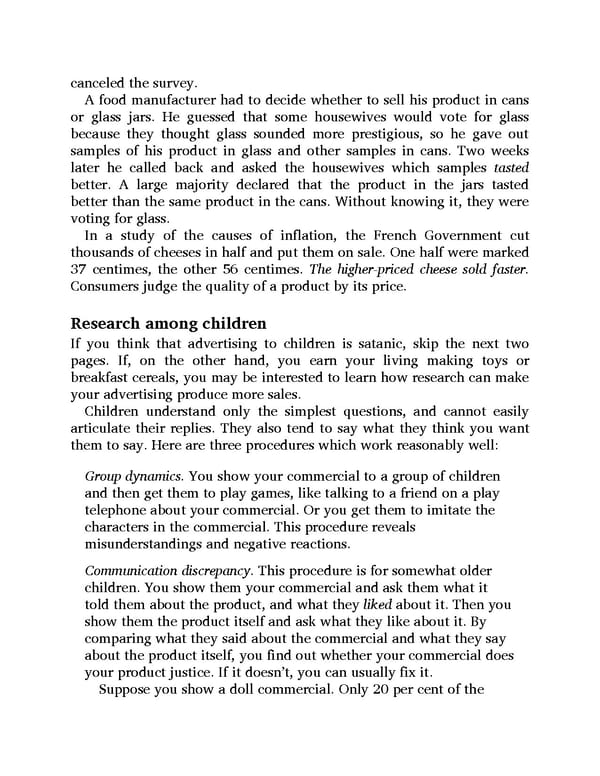canceled the survey. A food manufacturer had to decide whether to sell his product in cans or glass jars. He guessed that some housewives would vote for glass because they thought glass sounded more prestigious, so he gave out samples of his product in glass and other samples in cans. Two weeks later he called back and asked the housewives which samples tasted better. A large majority declared that the product in the jars tasted better than the same product in the cans. Without knowing it, they were voting for glass. In a study of the causes of inflation, the French Government cut thousands of cheeses in half and put them on sale. One half were marked 37 centimes, the other 56 centimes. The higher-priced cheese sold faster. Consumers judge the quality of a product by its price. Research among children If you think that advertising to children is satanic, skip the next two pages. If, on the other hand, you earn your living making toys or breakfast cereals, you may be interested to learn how research can make your advertising produce more sales. Children understand only the simplest questions, and cannot easily articulate their replies. They also tend to say what they think you want them to say. Here are three procedures which work reasonably well: Group dynamics. You show your commercial to a group of children and then get them to play games, like talking to a friend on a play telephone about your commercial. Or you get them to imitate the characters in the commercial. This procedure reveals misunderstandings and negative reactions. Communication discrepancy. This procedure is for somewhat older children. You show them your commercial and ask them what it told them about the product, and what they liked about it. Then you show them the product itself and ask what they like about it. By comparing what they said about the commercial and what they say about the product itself, you find out whether your commercial does your product justice. If it doesn’t, you can usually fix it. Suppose you show a doll commercial. Only 20 per cent of the
 Ogilvy on Advertising Page 235 Page 237
Ogilvy on Advertising Page 235 Page 237